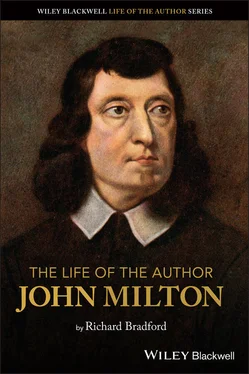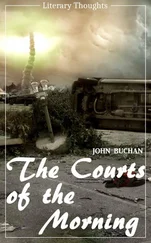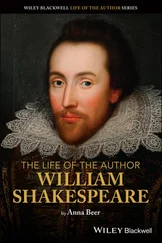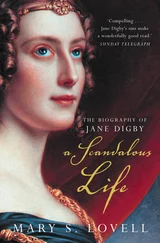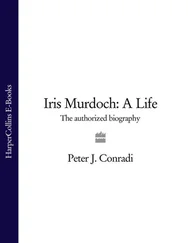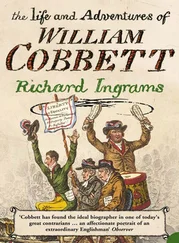Close to the Milton house was the estate of Harefield, presided over by Alice, Countess of Derby. Milton was introduced to the household by Henry Lawes, a composer and musician, who had been a friend of his father’s since the Bread Street days. Lawes, at the time, was music teacher to the Countess’s grandchildren. Milton’s attachment to the household is celebrated in his 1633 piece ‘Arcades’. ‘Arcades’ began as a masque, a brief drama involving verse, music and scenic effects, in which the Duchess is presented as the matriarch of a rural paradise in which the arts flourish. (Countess Derby, then aged seventy-two, had been a well-known patron of poets and playwrights, Spenser included.) But the work is more than a gift to his patroness. In the middle of the piece Milton introduces the ‘celestial sirens’ (63), figures borrowed from Plato’s Republic whose voices harmonise the concentric whorls of the universe, and blends this image with his by now familiar notion of
… the heavenly tune, which none can hear Of human mould with gross unpurged ear
(72–3)
This, like the music which accompanies the birth of Christ in the ‘Nativity Ode’, is an expression of God’s presence from which the Fall has detached human beings.
The most interesting section of ‘Arcades’ is the conclusion of the Genius’s address (74–84), in which Milton finds himself having to reconcile the notion of music which is beyond human comprehension with the newly elevated, almost otherworldly, status of the Dowager. To have caused her to hear it would have been both sacrilegious and sycophantic, and Milton provides a deftly evasive compromise: ‘[S]uch music’ would be worthy of ‘her immortal praise’ if only ‘my [Milton’s] inferior hand or voice could hit/Inimitable sounds’ (75–8). The ‘heavenly tone’ would indeed be a fitting tribute to her status, but she is attended by lowly human beings who cannot produce it.
While this might seem to ally him with the Court-sponsored forms of entertainment so decried by the Puritans he subtly incorporates a meditation on the timeless notion of spiritually and the limitations of the ordinary human state. He was, demonstrably, answering questions raised by his refusal to commit himself to a career. Tentatively, he was finding in poetry a means of exploring the controversies that would soon drive England into warring factions. His next step in this process would be ‘Comus’. In June 1631 the Earl of Bridgewater, the Countess’s son-in-law, was appointed Lord Lieutenant of Wales, and Lawes and Milton decided to collaborate in the writing of his second masque to celebrate this. ‘A Masque Presented at Ludlow Castle’, later to be known as Comus , was first performed in September 1634 in the grounds of Ludlow, one of Bridgewater’s official residences. Lawes wrote the music for the song parts, and the words, sung and spoken, were Milton’s. Three of the parts would be played by Bridgewater’s children, who, as Lawes’s pupils, had been well prepared for the demands of acting and singing.
The uncomplicated plot centres upon the kidnapping by the eponymous Comus, a semi-human demonic presence, of The Lady (played by the fifteen-year-old Lady Alice), whom he then attempts to seduce. It is a fairy story involving a conflict between Virtue and Vice; the former triumphs and a joyous, idyllic mood prevails. Comus was designed as the centrepiece of an evening of dancing and restrained conviviality; it was intended to reflect for its audience, and its participants, a collective feeling of familial order and optimism. (The Lady is eventually rescued by her two brothers, played by Lady Alice’s brothers, John and Thomas). Milton, who was responsible for the script and the direction of the plot, wraps a moral fable in light and decorative poetic dress, but at the same time, particularly during the verbal struggle between Comus and the Lady, he inscribes a more disturbing subtext – something that would have resonated for the adult, informed members of the audience. Three years earlier, in 1631, Countess Derby’s other son-in-law, Lord Castlehaven, had been at the centre of a trial which, if tabloid newspapers had existed at the time, would have become the newsprint scandal of the decade. Castlehaven was a bisexual, a paedophile and a sadist. He obliged a number of his male servants to have sex with him and on several occasions forced one of them, called Skipwith, to rape Castlehaven’s twelve-year-old stepdaughter Elizabeth, an act in which he was both spectator and participant. The biographical resonance of the Castlehaven scandal has been debated by Milton scholars for the best part of a century but while his most recent biographers refer to the events none suggests that they had a direct influence on the writing or performance of Comus . The consensus seems to be that while there are unsettling resemblances between what happened in life and in the masque there is no proof of a causal relationship between the two, a point made by John Creasey’s widely praised 1987 article whose title speaks for itself: ‘Milton and the Irrelevance of the Castlehaven Scandal’ ( Milton Quarterly , 4, 1987, pp. 25–34). Creasey’s opinion, endorsed by everyone since 1987, is based on the premise that we cannot reassemble potentially relevant details to create a model of the author’s state of mind as they created a poem, play or novel. As we will see in Chapters 13and 14, attempts to assemble a profile of an author and their intentions from biographical and contextual evidence went out of fashion in the 1980s. By the same token we might argue that because there is no direct reference in Orwell’s Animal Farm and Nineteen Eighty-Four to a particular place or regime then we can rule them out as representations of Soviet totalitarianism. Few would regard this as anything other than imbecilic, so why are we not allowed to apply the same contextual model to Milton’s Comus ?
Castlehaven was found guilty and executed in May 1631. He was beheaded and the two servants who allegedly colluded with him in various acts of rape and sodomy were hanged, as befitted their lower social ranking. The family would have recognised the parallels – an adult, demonic figure of aristocratic bearing attempts to satiate himself with a virgin child. Comus, unlike Castlehaven, fails, but there was an implied postscript. Castlehaven was a Roman Catholic and an enthusiastic supporter of Charles I. Prynne, in Histrio-Mastix cites Castlehaven as the worst exemplar of his religious creed, and from this he argued that the grand ceremonialism of the Roman Church encouraged the most sinful, lewd, pernicious aspects of our fallen condition. For virtually everyone who witnessed the performance of the masque the curious intersections between the Castlehaven case and the broader polemical sweep of Prynne’s book would have been evident. We have no evidence from those present at the performance of how what they witnessed triggered uneasy recognitions of what had recently happened to the Bridgewaters, but consider: a year before the masque was performed a non-aristocratic fourteen-year-old girl had been raped by a gang of men in the grounds of the castle. Amazingly, she named those who had assaulted her and insisted that charges be pressed, though we know nothing of the result. We cannot prove that Milton knew of the incident but at the same time we can’t be certain that he did not: the parallels between a brave early teenager who goes after the rapists and Milton’s The Lady who heroically resists them are stunning. Moreover Alice’s mother the senior Lady Egerton had written a letter to her friend stating that she feared that Alice had been bewitched, entranced by the husband of a servant who had acquired his powers from Satan. It is unlikely that Milton knew of the letter but he was certainly alert to the neuroses and preoccupations of his sponsors, the house of aristocrats for whom he was writing a play that would not dispel their anxieties but which might help them in their attempts to confront them. Milton was harnessing his talents as a poet to a more solemn and pragmatic commitment, involving fundamental elements of belief and behaviour. His seemingly self-indulgent period of withdrawal was in truth quite the opposite.
Читать дальше
